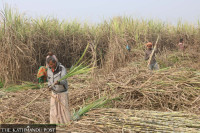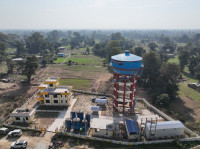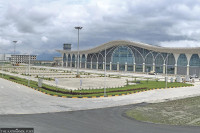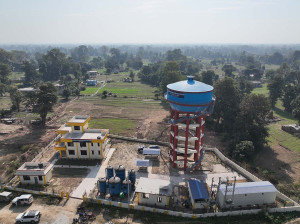Money
Developer of Upper Trishuli 1 sees funding oversubscription by $178 million, near financial closure
The developer plans to construct the powerhouse area and finish electromechanical works by the third quarter of 2022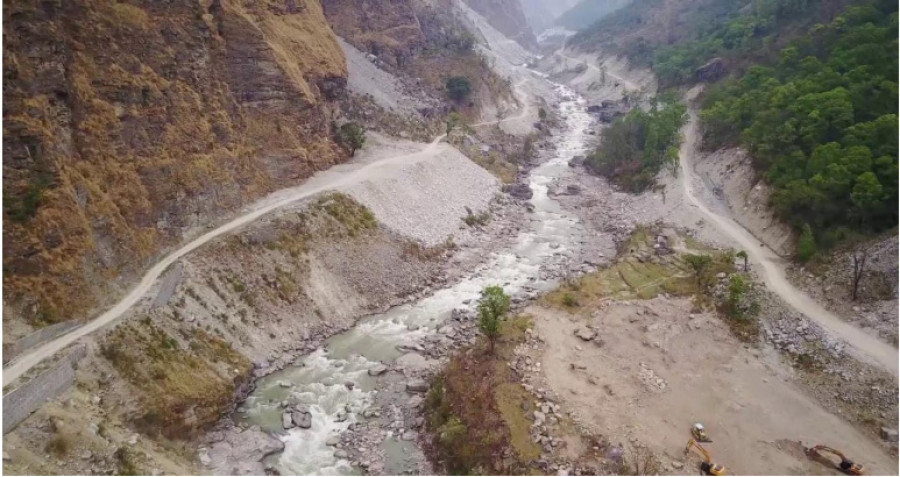
Prahlad Rijal
The Nepal Water and Energy Development Company (NWEDC) is all geared up to perform the financial closure of the 216 megawatt Upper Trishuli 1 Hydroelectric Project in Rasuwa District.
According to the company, it has seen a funding oversubscription with nine multinational lenders offering a loan of $631 million against the $453 million required in debt finance. This comes days after the cabinet decided to give it a tax holiday extension. It will cost $647.4 million to build the hydel plant.
“The financing for the project was delayed because of hedge fund issue, we are close to signing the agreement and the lenders are happy that the project has got a tax holiday extension from the government,” said Bo Seuk Yi, chief executive officer of the company.
Recently, the Cabinet decided to extend the tax holiday to the company a few weeks after the anti-dollar alliance — Asian Infrastructure Investment Bank — approved its first $90 million loan to the project, raising eyebrows over the government’s decision to give tax holiday for the company which has a dollar-denominated power purchase agreement with the power utility.
As per the provisions, the company will be exempted from 100 percent of income tax for the first 10 years of commercial operation and 50 percent exemption for an additional five years.
“It is not tax privilege as some have said but an extension of the earlier agreement with the government as the financing was delayed by multiple reasons including hedge fund issue,” said Yi. “We are satisfied with the government support and are now planning to kick-off the project by November, 2019.”
Also, Deputy Spokesperson at the Energy Ministry Gokarna Raj Panta said that the government decision to give tax holiday to the company should not be of any issue as all hydel plants with commercial operation date within 2021-22 also enjoy the incentive, not only Upper Trishuli.
“In the case of Upper Trishuli 1, the tax holiday provision has been extended because of government delay in fixing terms of hedging” an anonymous official at the Nepal Electricity Authority said. “Even export-oriented Upper Karnali and Arun 3 have been given tax holidays as mentioned in their project development agreement.”
The project, being developed under a 35-year build-own-operate-transfer model is financed with a mix of debt and equity funding. The total debt of the project is entirely financed by foreign capital with funds from sponsors including International Finance Corporation, Asian Development Bank, Export-Import Bank of Korea and others.
The project will be developed and commissioned in line with two modalities—engineering, procurement and construction by a joint venture of Daelim and Kyeryong, and operation and maintenance by South Korea’s state-owned Korea South-East Power. It’s generation portfolio is over 10,000 MW and has completed 10 overseas projects since 2008. The company received ‘AA’ credit rating by Fitch ratings in 2018.
According to the company, it plans to construct the powerhouse area and finish electromechanical works by the third quarter of 2022 and install all three units — each churning out 72 MW of electricity — by the second quarter of 2024.
The developer and the Energy Ministry signed a project development agreement in December 2016. As per the terms of the agreement, the sponsors—a Korean consortium, local promoter and International Finance Corporation—will be responsible for the design, engineering, financing, construction, completion, commissioning, ownership, operation and maintenance and transfer of the project.
The electricity generated by the plant will be sold to the Nepal Electricity Authority. The parties signed a 30-year power purchase agreement in January 2018 and the state-owned power utility has agreed to buy the energy under a take-or-pay arrangement.
Earlier, the project had sunk into uncertainty after the developer threatened to pull out from Nepal over a foreign exchange hedge row with the government after it asked the developer to contribute a hefty sum to a hedge fund which would be used as a cushion against exchange rate risk.
When the Nepal Electricity Authority signed a power purchase agreement with Nepal Water and Energy Development Company a year ago to purchase the electricity generated by the project, the state-owned power utility agreed to pay in US dollars for a period of 10 years or until the portion of the investment made with foreign loans is recovered by the developer, whichever comes first.
After the row over hedge fund, the developer agreed to provide 17 percent of the energy to the power utility free after 14 years and the government and electricity authority agreed to contribute two-thirds of amount to the hedge fund.
The plant will evacuate the electricity to the Upper Trishuli 3B hub over a 10-km 220kV transmission line connected to the national grid. The project has the capacity to churn out 106 megawatt even in the dry season.
***
What do you think?
Dear reader, we’d like to hear from you. We regularly publish letters to the editor on contemporary issues or direct responses to something the Post has recently published. Please send your letters to [email protected] with "Letter to the Editor" in the subject line. Please include your name, location, and a contact address so one of our editors can reach out to you.




 10.12°C Kathmandu
10.12°C Kathmandu

